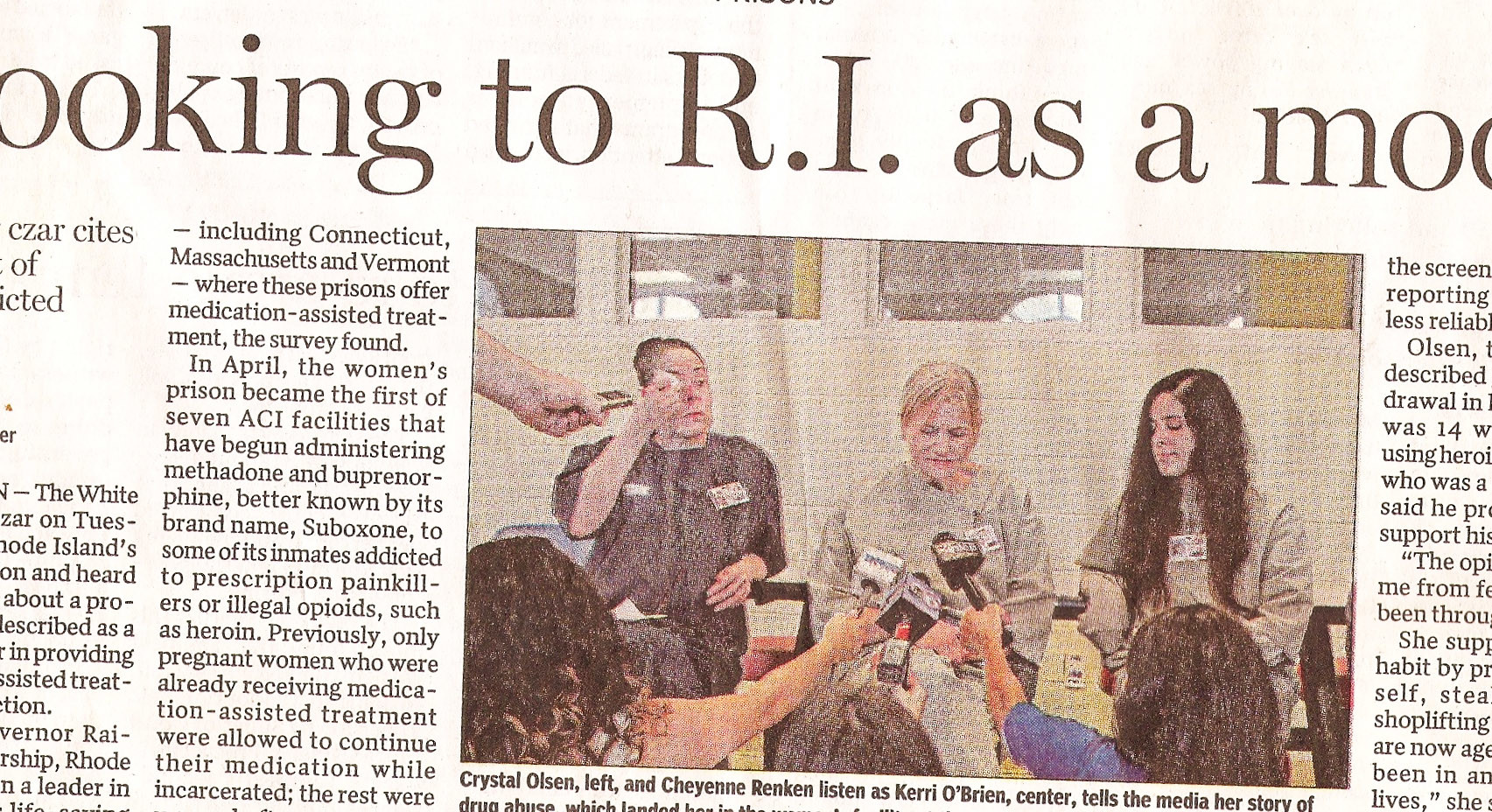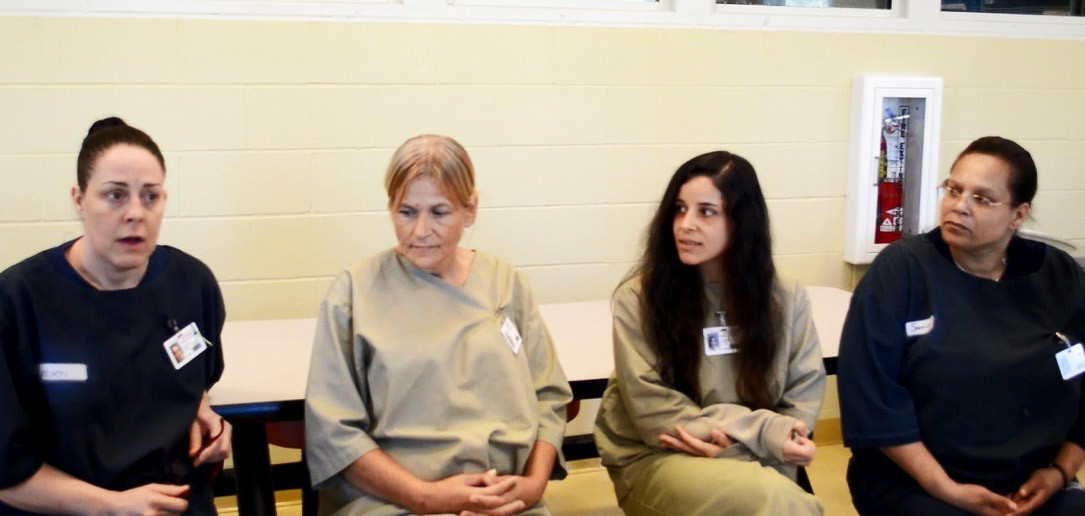Heroin, sexual abuse, prison, methadone, and the promise of recovery
When women prisoners tell their stories about battling addiction, what is the most important takeaway?
CRANSTON – On July 26, four women incarcerated at the Gloria McDonald Facility told their stories of drug addiction and their hopes for recovery through a new program of medication assisted treatment at the jail.
Four mothers in drab khaki and blue prison garb told their brutal tales of survival on the street, often forced to go cold turkey in their jail cells.
Sprawled out before them, sitting on the visiting room floor, were a number of TV and radio reporters: well-coifed, well-attired professionals from WPRO, WPRI and ABC6, holding a phalanx of microphones upward to capture the soft-spoken words of the women prisoners.
A photograph by Providence Journal photographer Steve Szydlowski, published on Page 4 of the July 27 edition of the daily newspaper, captured this surreal prison scene.
But the impact may have been mitigated because the story and the photo appeared below Mark Patinkin’s column atop the page, entitled: “The gluten that binds us, and other R.I. symbols.”
Championing medication-assisted treatment
The stories that the women told were part of an effort to champion the new strategies now underway at the prison to provide prisoners with medication-assisted treatment to help them with their addictions, instead of forcing them to go cold turkey in their jail cells, with the promise of access to treatment following their release from prison.
The moving stories by the four women was timed to coincide with a visit by Michael Botticelli, the White House director of National Drug Control Policy, who himself is in recovery.
“We know that people who leave incarceration without good connections to treatment have a significant overdose risk, often within the first 72 hours of release,” Botticelli said.
When Botticelli misspoke, saying: “I’m really honored to be here today to highlight the good things that are happening in Massachusetts, and to see if we can replicate these kinds of programs nationally,” it was one of the jailed mothers, Kerri O’Brien, who caught the mistake [while no one from the news media appeared to notice or want to correct].
Telling moment
One of the most telling moments in the presentation came when the first mother, Crystal Olsen, told the story of how she became a heroin addict. Her father, a heroin addict, shot her up when she was just 14, and then forced her to become a prostitute to support his habit.
“I ended up with a drug habit that needed to be supported. I used drugs a lot because of the trauma I had been through. The opiates would stop me from feeling what I’ve been through,” Olsen said.
“I’ve been back and forth to prison, doing illegal things, prostituting, stealing cars, shoplifting. I just lost my fiancé to an opiates overdose,” she continued, sharing that she had two young daughters, ages 6 and 9.
“I’ve been on methadone for 19 years, and every time I’ve come into the prison, I’ve had to be taken off it.”
But now, Olsen continued, under the new program, the methadone is being continued in prison. “I’m really hoping that it helps me out, and I’m going to plan on going into treatment.”
Progress on addiction?
Crystal Olsen’s story was told again in a column co-authored by Botticelli and Gov. Gina Raimondo in the Aug. 7 edition of The Providence Journal, entitled “R.I. progress on addiction.”
Left out, however, was the first part of the story: how Olsen had been shot up with heroin when she was 14 by her father, and then turned out on the street to turn tricks as a prostitute.
Her continued use of opiates, Olsen had explained to the news media on July 26, was to stop her from feeling the pain of the trauma she had gone through.
Questions, questions, questions
As important as medication assisted treatment may be to provide prisoners with an opportunity to cope with their addiction and prevent potentially fatal overdoses upon their release, there are any number of questions raised by the efforts to promote the new Rhode Island program.
Why exclude that part of Olsen’s story about her father’s abuse from the column? If you don’t talk about it or acknowledge it in a truthful fashion, does it get swept under the rug as an inconvenient fact?
Where were the authorities – from school, from the police, from the community – who somehow failed to protect a young girl of 14 from being turned out on the street as a prostitute by her father?
What is the correlation between addiction and sexual abuse and sexual violence?
In the new treatment and support program planned to be offered to former addicted prisoners at the R.I. Department of Behavioral Healthcare, Developmental Disabilities and Hospitals, why is there only provision for one peer counselor?
The new medication assisted treatment may indeed save lives, always a top public health priority. But that is not the only potential message that needs to be heard from Crystal Olsen’s story.







